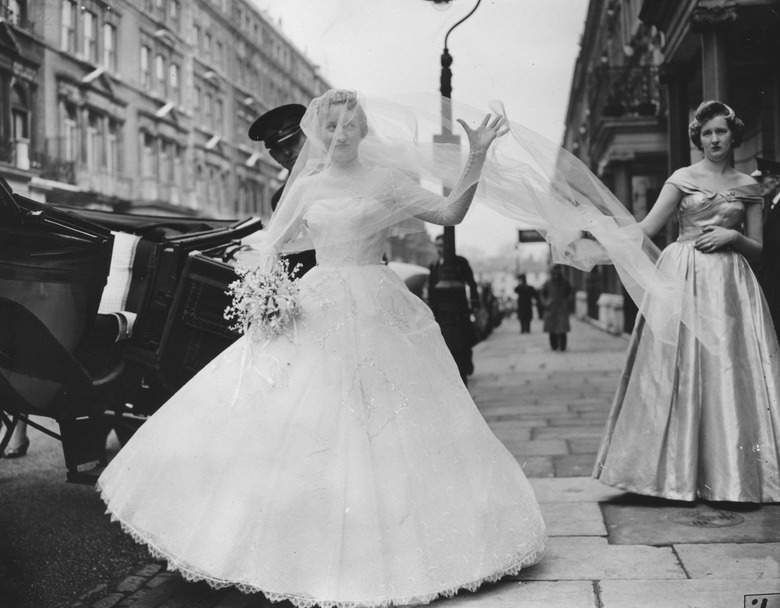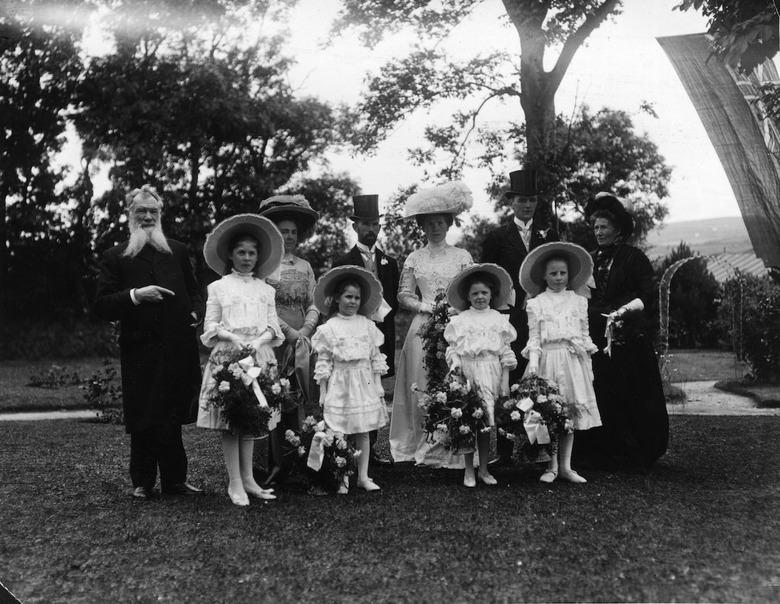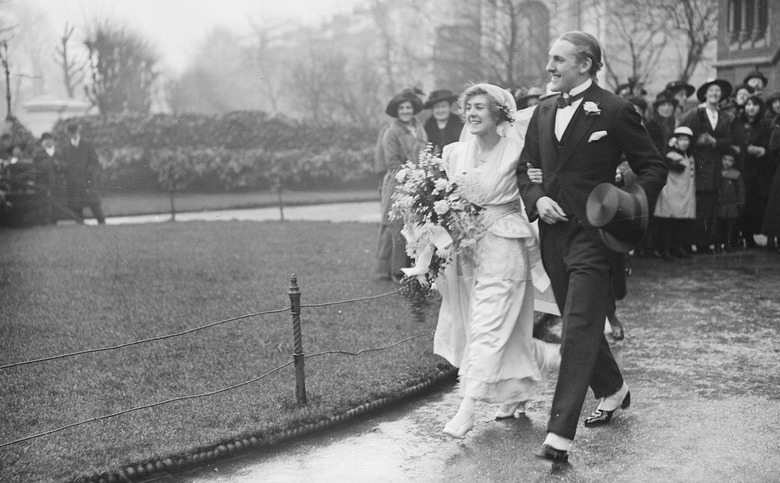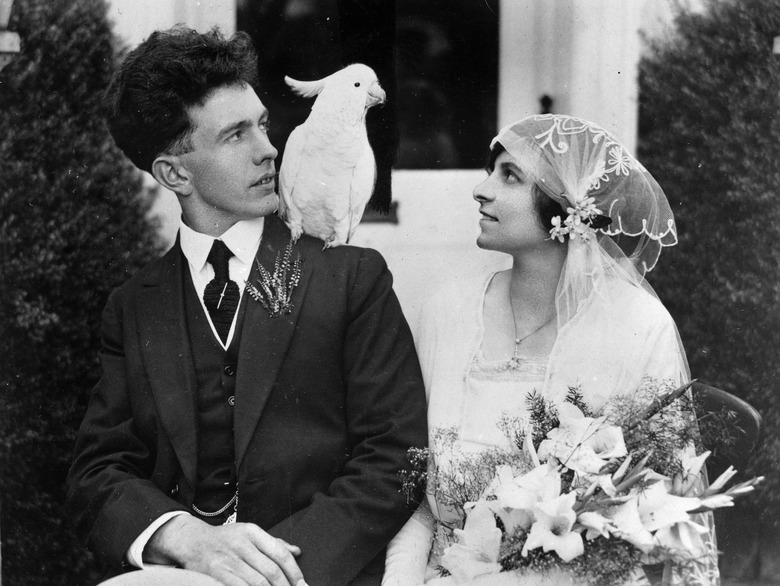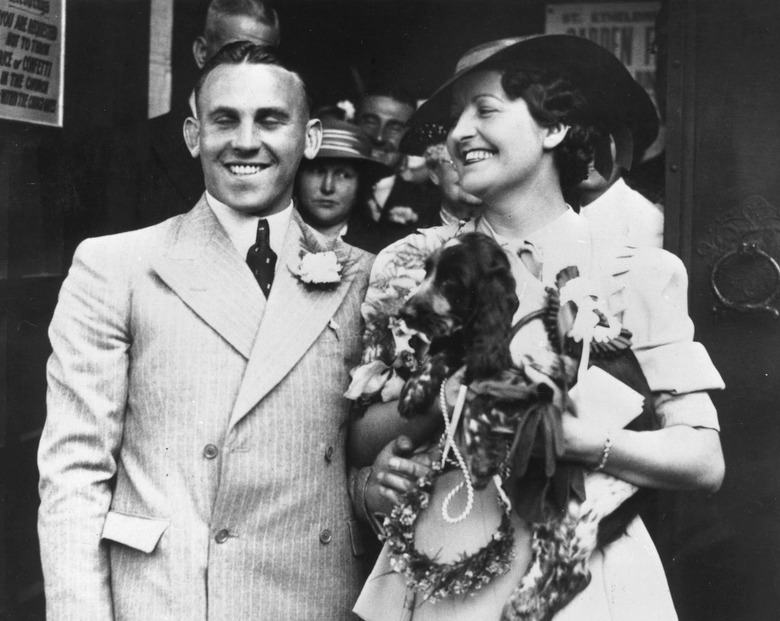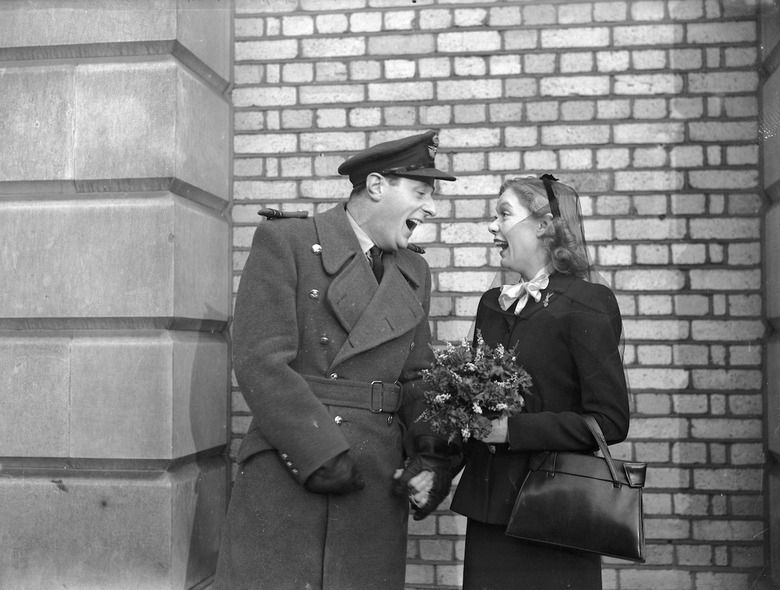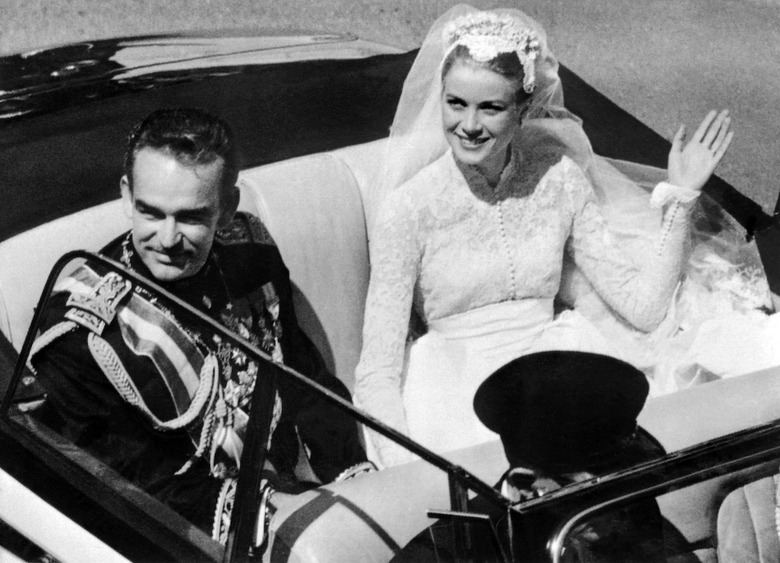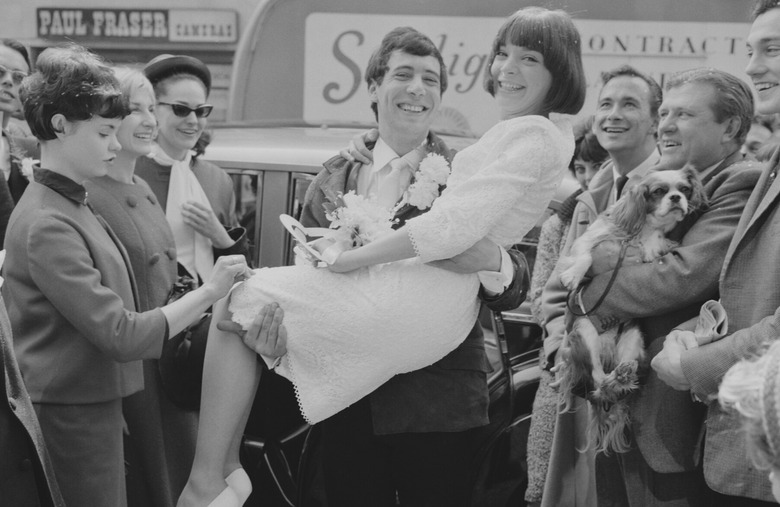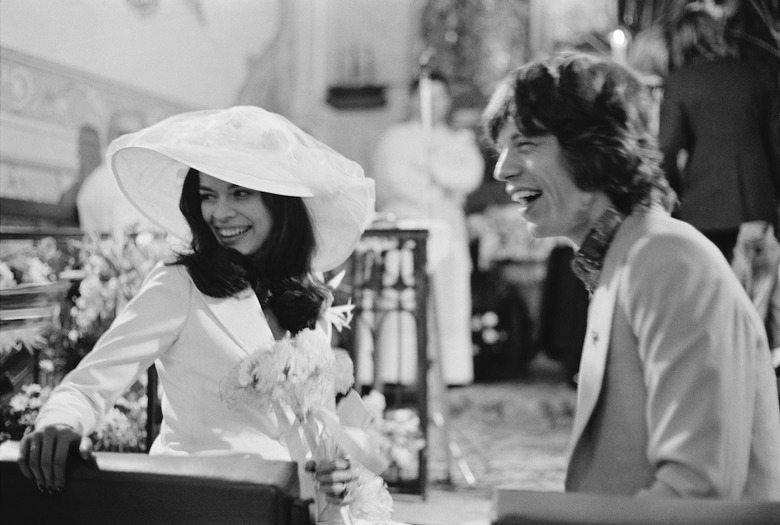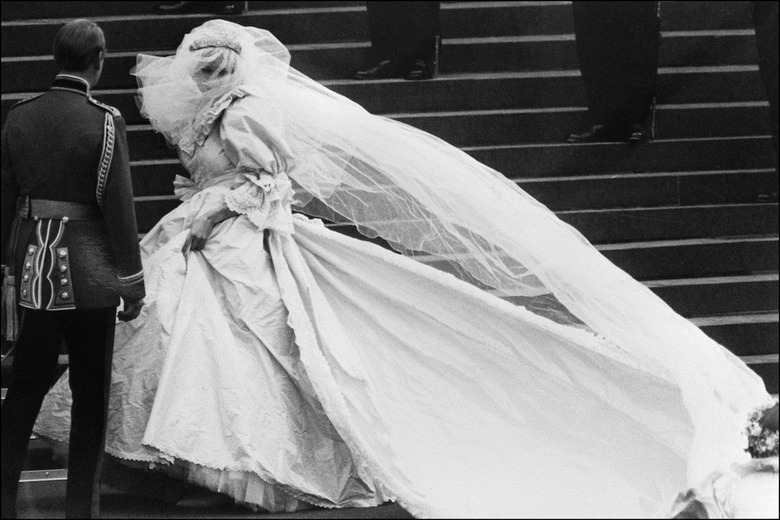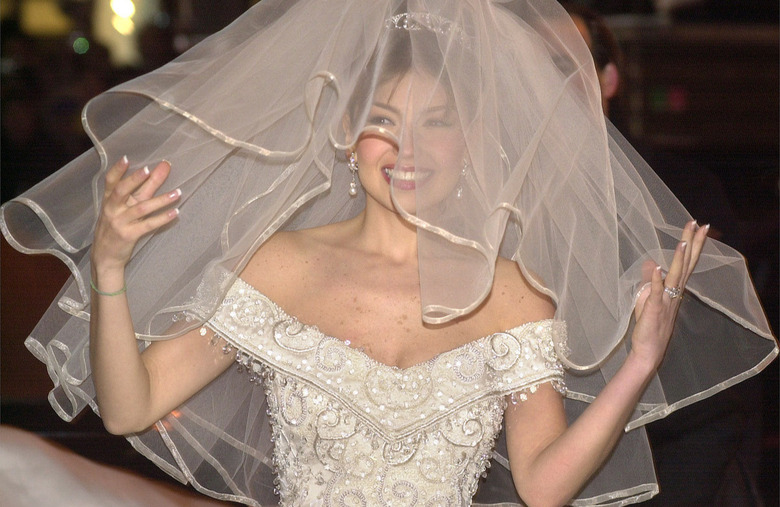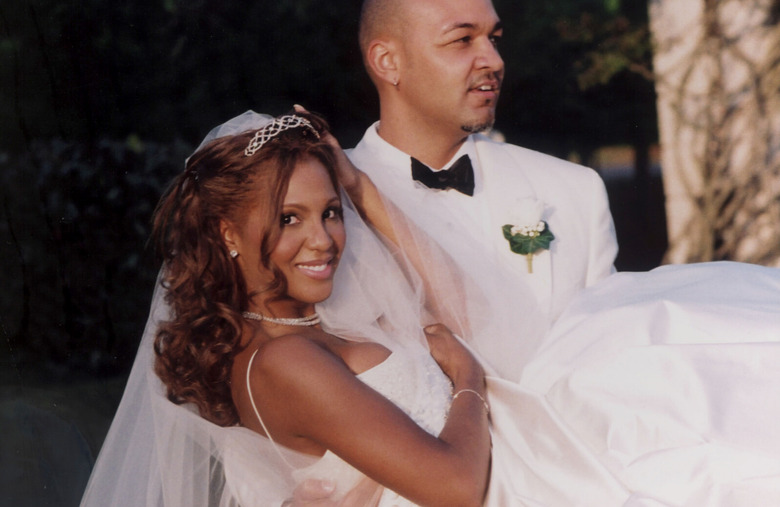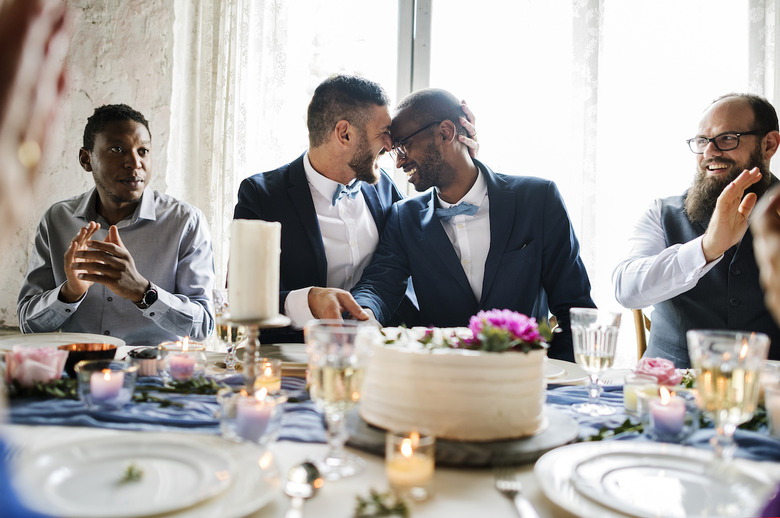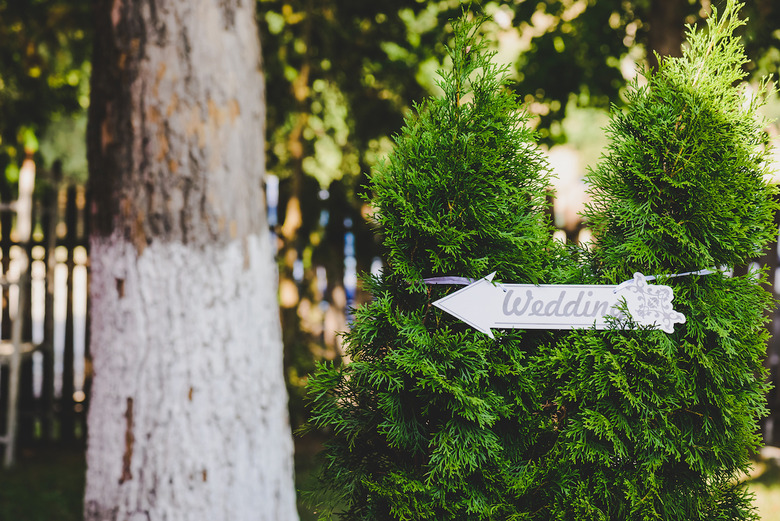The Biggest Wedding Trends In Every Decade Since 1900
Wedding style changes over time. And like traditional marriage vows, these changes are for better or worse. Trends ebb and flow across generations — from grandparents, to parents, to children and grandchildren. Even the most timeless of styles were once novel and the most dated of trends once in fashion. Here's how weddings have changed from your great-grandparents' turn-of-the-century ceremony to your friend's reception last summer.
1900s
On a rainy wedding day in 1840, 20-year-old Queen Victoria of England stunned her groom and country and turned white into the gold standard of bridal style. By 1900, in part because of technological advancements in wedding photography and proliferation of style magazines, white was the color to wear. Throughout that first decade, brides wore white dresses fit with frills, lace and s-bend corsets thought to provide wearers a hip-swinging walk. Puffy sleeves tapered at the forearm and gloved hands carried flower bouquets.
1910s
Throughout the nineteen-teens, bridal dresses turned from the Victorian era gowns over crinoline to flowy tea-length frocks fit for fun and dance. Brides topped off the look with minimal makeup, using new products like mascara, powder and lipstick. Pageboys commonly dressed in sailor suits or flouncy shirts and bridesmaids wore white too. Popular wedding-appropriate songs of the time included Louis Hirsch's "The Wedding Glide," and Arthur Fields and Walter Donovan's "The Aba Daba Honeymoon."
1920s
Hemlines and bridal hairdos shortened during the roaring '20s as flapper fashion found its footing. Waistlines dropped for a more streamlined silhouette. Brides layered long pearl necklaces around their neck and crowned their heads with Juliet Cap veils and cloche hats. It was also common at the time for brides to carry bouquets of long-stemmed white calla lilies. The '20s also introduced the bridal registry to the wedding canon. Even today, arriving at a nuptials giftless is one thing wedding guests should never do.
1930s
Due to the Great Depression, marriage rates were down 22% from 1929 to 1933. However, marriage proposals of the time were just delayed, not denied, as marriage rates soon returned to normal. Still rebounding from economic turmoil, brides on a budget returned to the past practice of repurposing an already-owned best dress for their wedding day. Grooms donned oversized striped suits with shoulder pads and ties. Hats, a holdover from the roaring '20s, were also popular for both parties. Intricately iced and otherwise naturally decorated cakes were common during the decade.
1940s
Wartime brought rationing and little room for excess spending. And based on a groom's deployment, a wedding could be announced at the start of a week and held at that same week's end. In 1942, 1.8 million weddings were held in the U.S., two-thirds of those between a soon-to-be-deployed military man and his bride. Dresses were simple and reusable, featuring gathered sleeves and padded hips. Jackets were worn over shortened gowns to stay warm when happily running out of the venue, chapel or courthouse. Red lipstick and pinned curls finished off the desired look. As couples weathered long-distance separation, men began to increasingly wear wedding bands as a symbol of their commitment even abroad.
1950s
From Elizabeth Taylor's star-turn in "Father of the Bride" to Grace Kelly's royal wedding or the nuptials of Jackie and Jack Kennedy, ordinary '50s folks looked to their stars for style direction. Bridal necklines were sweetheart or high collar. Dress lengths were tea or ballerina. And sleeves were long-lace or capped off-the-shoulder. Cake toppers and Bible sprays (prayer books decorated with small flowers and carried as bouquets) were also in vogue. With post-war life returning to normalcy, marriage rates reached near all-time highs. Couples celebrated their triumphant love with a return to decades-old trends like hand gloves, fancy dress codes and lavish church ceremonies.
1960s
Mod means mini-skirts, shift dresses, bouffants and Twiggy liner. Ballroom receptions and church ceremonies were common for traditionalist couples, but fresh, alternative brides adopted the mod stylings of Priscilla Presley and Sharon Tate or, later, the boho and barefoot looks of Stevie Nicks and Joni Mitchell. Dresses were commonly a-line or more column-like in silhouette, featuring an empire waist. Pillbox hats, birdcages and fly-away veils were also all novel and chic. Cakes continued their descent higher into the sky, the Space Age upped the popularity of out-of-this-world modernist details, and the burgeoning hippie movement introduced the daisy as a staple wedding flower.
1970s
Throughout the disco decade, grooms joined brides in wearing white. A white suit, slimmer in fit than ever before, became a popular and daring alternative to the classic black coat and tie. Bridal fashion varied greatly from bride to bride as each navigated their place in the day of disco, rock 'n' roll and the waning hippie movement. Bianca Jagger dressed in a tailored white suit jacket, flowing white skirt and veiled sun hat as she wed Mick in a '71 ceremony that set the standard for rocker-chic. Naturally decorated headdresses were common, as were outdoor ceremonies grander than the previous decade's backyard affairs. Cooperative weather, a wedding stress you cannot control, was still a common concern.
1980s
Princess Diana. That's it, that's the decade's trend. The goal: get as near to Diana's royal bridal ensemble as possible on a non-royal budget. All parts of the '80s wedding day were bigger: the dresses, the cakes, the guest lists. Dresses were made to take up space. Gowns with high lace necklines, gathered sleeves and foofy detailing were paired with cathedral-length veils and cascading bouquets of baby's breath and gardenias. Cakes spread out beyond stacked tiers, as elaborate plastic staircases bridged individual cakes together and a working fountain lit beneath the largest of the bunch. Technological advancements made wedding videographers a common splurge too, and a soap opera wedding made unity candles all the rage.
1990s
Nineties minimalism was a welcome retreat from '80s busyness. Brides opted for sleek silk or sheath, spaghetti strap gowns with sheer paneling and off-the-shoulder, bow-capped or Bardot-style sleeves. Vera Wang popularized a sporty-chic style with a full princess ball gown, a dropped waist and halter-top. Headbands were an essential accessory. For a peek into '90s wedding style, pop in a "Father of the Bride" VHS tape or anything from Julia Roberts' extensive wedding film catalog, such as "Runaway Bride" or "My Best Friend's Wedding." Bouquets and guest lists both shrunk in size as couples turned to once-taboo elopements for intimate ceremonies, especially for second weddings.
2000s
Goodbye sleeves, hello strapless. As ceremonies moved from churches to non-religious venues like hotels or country clubs, style changed too. Glamorous and shining fabrics like satin and taffeta, embellished with jewel appliques, reigned supreme as shown on TV shows like "Say Yes to the Dress." Straight-across necklines turned to sweetheart by the decade's end. Brides crowned themselves with tiaras and the years-long cupcake craze led to the inevitable swap of traditional tiered cakes for cupcake towers. And after "Friends" characters Chandler and Monica gifted their wedding guests with disposable cameras for their '01 TV reception, several other couples followed suit.
2010s
From the vows to signage, signature drinks and toasts (good or bad), everything about 2010s weddings aimed to be one-of-a-kind. Themes diversified and even bridesmaids style, once matchy-matchy, turned personal. Still, some common trends stick out. Cakes came naked or watercolored and were often replaced with another dessert altogether. Bridal style saw the return of sleeves and social media ushered in the world of Pinterest boards, punny couple hashtags and geofilters. Marriage equality passed in 2015 in the U.S. and in the years since, LGBTQ couples have trendset. Less than half of same-sex couples opt for wedding parties and nearly 40% walk the aisle together at a ceremony's start.
2020s
Where will wedding style go from here? Trends are being tossed out the window as couples look for what suits them best. Concerns over sustainability are introducing a welcome eco-friendly minimalism to the wedding canon. Meanwhile, statement sleeves of the '80s and '90s are being toned down for a chic reinvention and roaring '20s glamour is being channeled a century later. However, some things never change. Even in these modern times, remember to always follow good wedding etiquette.
More From The Daily Meal
Dining Etiquette Rules That Should Make a Comeback
Cooking Tips, Hacks and Tricks Your Grandma Knew
The Most Romantic Restaurant in Every State
Outrageous Dating Etiquette Rules Your Parents Followed
The Best Special Occasion Restaurant in Every State
